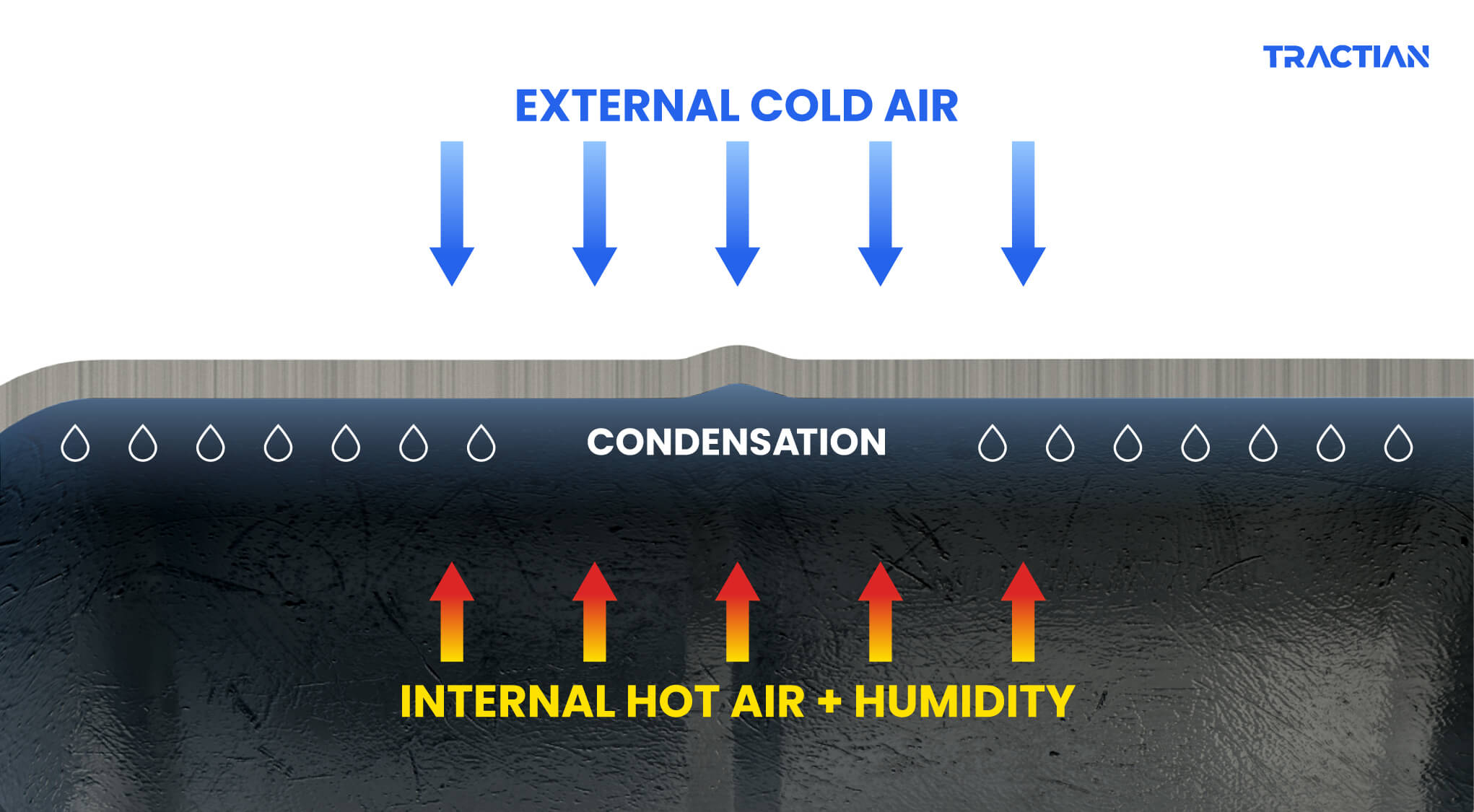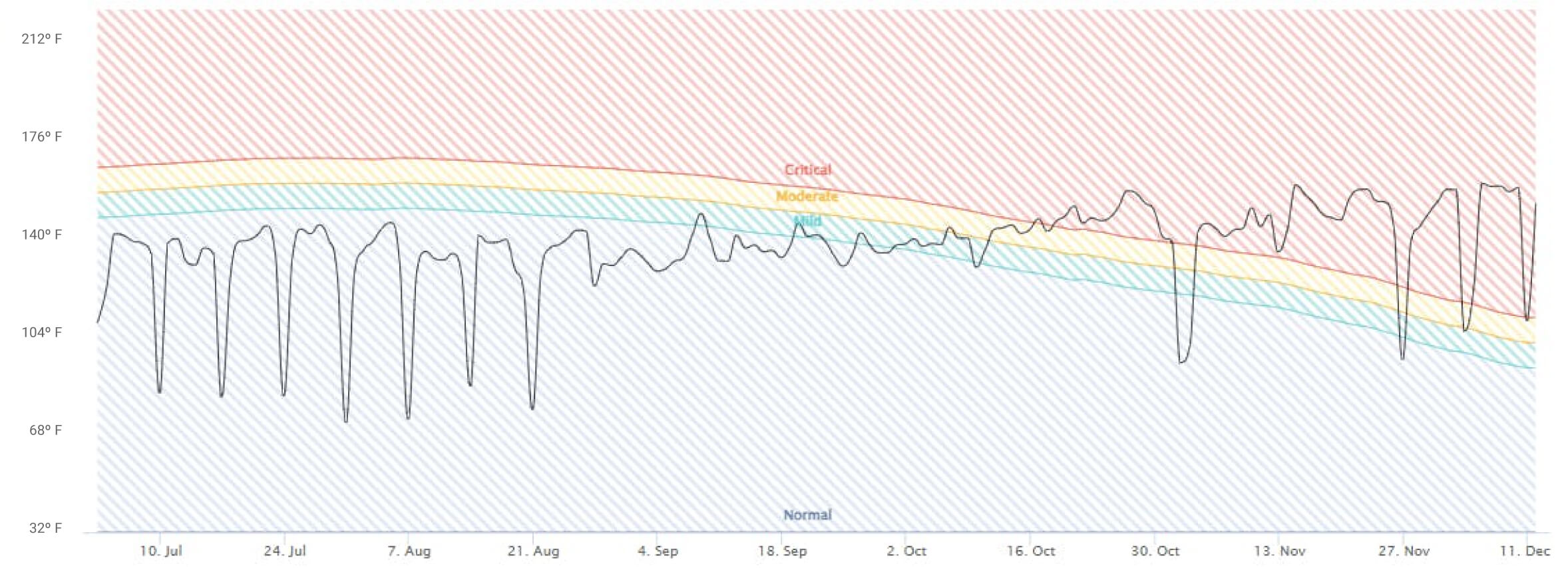Smart Temperature Monitoring Systems and Seasonal Adaptability
Monitoring the temperature of equipment is a technique used by most – if not all – maintenance teams. Its purpose is to assess the condition of machinery in various operating parameters.
Changes in the environment, like temperature and humidity changes, help maintenance teams decide if a project is possible or not, and which goals to pursue. These environmental changes can also dictate the performance, level of wear and tear, and efficiency of industrial machinery.
Conditions like ambient temperature, machine temperature, altitude, ambient atmosphere, and ventilation determine how maintenance should be performed on each piece of equipment.

Temperature and Humidity Standards
The IEC creates the standards used in the industry. According to IEC 60034, usual service conditions are when the altitude is no higher than 3,280ft above sea level and the ambient temperature is no higher than 104°F.
Machines that operate at altitudes above 3,280ft have heating problems caused by the rarefaction of the air. In this case, rarefaction is a decrease in the machine’s cooling power.
The insufficient heat exchange between the engine and the surrounding air leads to the requirement of reducing the maximum working temperature. The IEC 60034 standard establishes that for every 328 feet of altitude, the temperature rise limits must be reduced by 1%.
Here’s a real world example:
If we have a 100 hp motor with F insulation with ΔΤ 80 K , working at an altitude of 4,921 feet above sea level, the limit ambient temperature of 104°F should be reduced to 96.8°F to cope with the effects of air rarefaction.
This equation reads as: Tamb = 104 – 175 . 0,04 = 96.8°F
Ambient Temperature Changes
In industries, ambient temperature is the average temperature of an environment where machinery and equipment is housed. No matter the altitude, temperature is one of the most important factors to monitor.
High temperatures or temperature increases can make machines overheat, causing them to fail and reducing their service life.
Some electric motors operate constantly at ambient temperatures above 104°F, and they need to compensate for the effects of these high temperatures. Special insulating materials often work well for decreasing the degradation of winding insulation or reducing the motor’s power rating.
On the other hand, low temperatures can affect the viscosity of lubricating fluids, increasing friction and wear on moving parts. In extreme conditions, or below -4°F, excessive condensation occurs, requiring special lubricants, additional drainage, and even heating resistance. This is exactly why temperature adaptability is important.
For more on why temperature changes affect electric motors, read this blog.
Humidity Monitoring
Humidity, like temperature, is another key factor in machine performance. High humidity levels can cause corrosion, damage to electronic circuits, and can affect the adhesion of parts due to condensation. Monitoring environmental and machine humidity is key in keeping machines up and running.

To break it down further, atmospheric air is made up of different gasses and water vapor. The hotter the air is, the more moisture it can retain, making a higher amount of water vapor.
When hot air collides with a cold machine surface, its temperature decreases. This changes moisture in the air into drops of water, which then interact with the parts and components of the equipment.
Then, during machine operation, condensation occurs. This can damage asset components, including:

At the same time, locations with low humidity offer other challenges. This can include the drying out of rubberized components, which causes cracking and breakage.
Seasonal Maintenance
As the seasons change, environmental conditions are also altered according to the geographic region of the industries.
Keep in mind – the region you’re operating in plays a big role! Companies in Northern and Midwest states have to deal with extreme cold (and heat). Coastal companies and those farther South will find larger variations in humidity conditions, as well as higher continuous temperatures.
Because of the differences amongst regions, maintenance teams should always take into account climate variations throughout the year.
Practical ways to perform altitude checks include:
- Increasing the frequency of visual inspections of belts
- Increasing the frequency of visual inspections of belts in environments with low humidity
- Increasing the number of drains on motors with high humidity
In equipment where smart monitoring is used, the temperature limits are meant to adapt with the seasons. This helps to distinguish what’s interference from the environment, and what’s real information about the machine.
The graph below shows a case similar to this example. The limits show a tendency to fall due to the decrease in ambient temperature. But, the temperature of the equipment rises, indicating some anomaly in the machine.

How Do Smart Temperature Sensors Work?
Smart temperature sensors are a great alternative for real-time temperature monitoring. Using this technology, the temperature of equipment can be easily tracked, controlled, and regulated, making sure no machine overheats or freezes.
IoT sensors are both efficient and convenient, but there is a drawback: there is no seasonal adaptability. That’s why Smart Trac came to be – because what’s a smart temperature system without the ability to change with the seasons?
Smart Trac, the TRACTIAN IoT sensor, automatically adapts to the environment’s conditions. It listens to each piece of equipment and evaluates the condition of the machines in real time, collecting data that can be utilized in predicting environmental changes that may affect equipment.
The monitoring system understands asset behavior and the sensor collects data from the environment and the equipment. This data is then used by the platform to create a behavior model, which is based on more than 30,000 monitored machines.

The model we use is fundamental for determining both acceptable and harmful levels that may indicate irregular equipment behavior during monitoring. By analyzing the equipment’s vibration levels and temperature, our platform compares it to the equipment’s behavior model. This helps in identifying anomalies and possible problems that could compromise its performance.
TRACTIAN platform uses machine learning models and artificial intelligence (AI) algorithms to analyze the data collected during the training period. It takes into account historical temperature information – and weather forecasts – from the region to determine the most accurate limit values for each season, increasing the efficiency of monitoring.
TRACTIAN fault detection technology has been granted a patent by the United States Patent and Trademark Office – the world’s leading patenting institution. In addition to detecting issues and alerting when something is amiss, our technology goes a step further. It offers specific diagnoses for each failure mode, and provides maintenance managers with targeted solutions for addressing the problem. Click here to learn more about the patent and what makes our technology so advanced.
Smart Trac training makes it possible to get accurate information about the condition of the equipment, without the interference of external factors like weather and temperature. Even better – once training is done it doesn’t need to be repeated, making the process efficient and easy to use.

In the graph above, we see how the predicted temperature range changes throughout the year. It makes predictions based on data, and adapts to all seasonal conditions. In other words, the AI understands the temperature variation of the environment according to the region, and compensates automatically.
Smart Trac is the only sensor on the market that considers regional climate conditions in each season of the year. Using smart temperature monitoring gives you automatic seasonal control, accurately preparing you for any temperature or humidity problems.
Want to learn more about our smart temperature monitoring system? Schedule a free demonstration and talk to one of our specialists.
Almost there, !
We just need a few more informations: